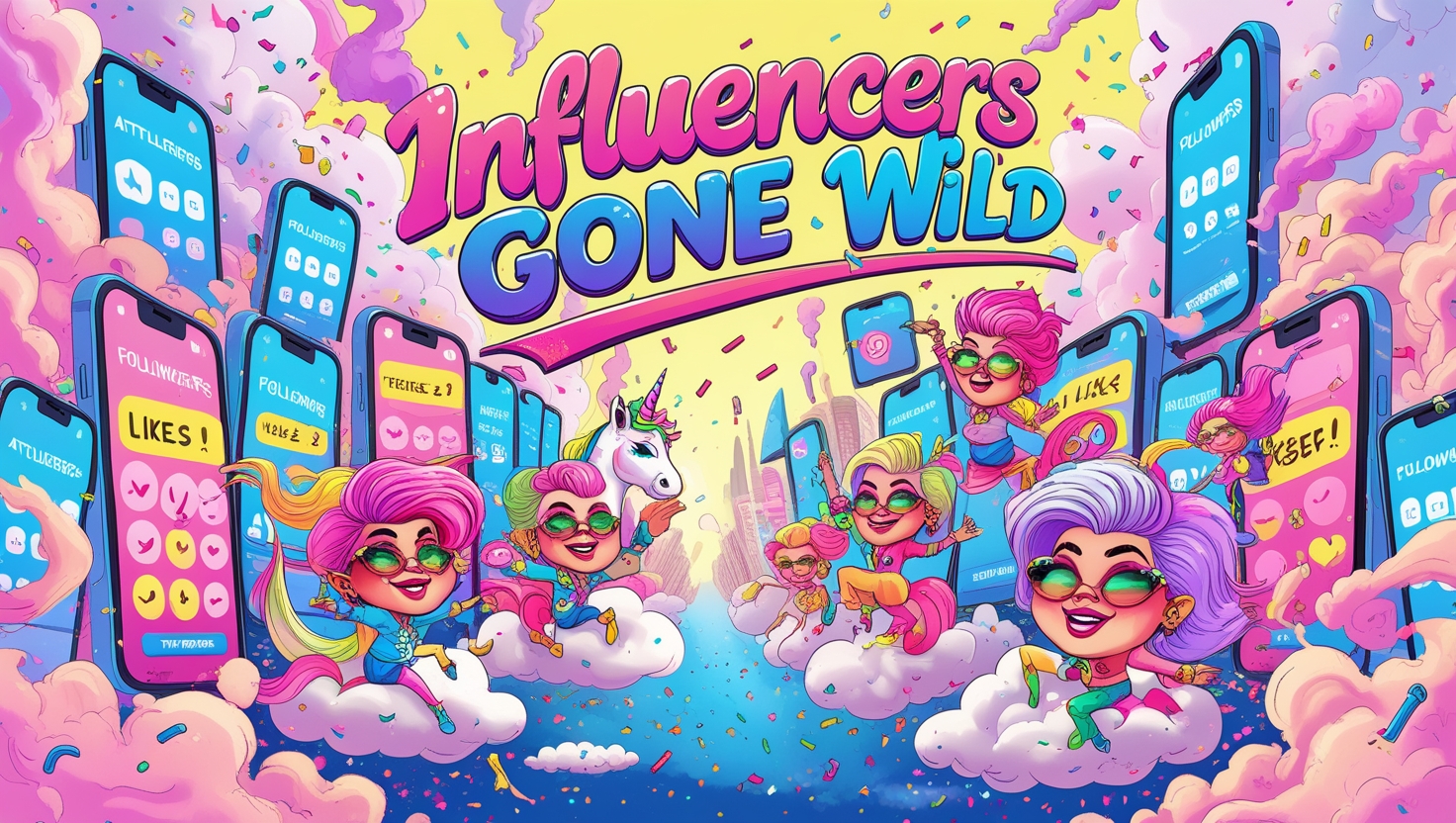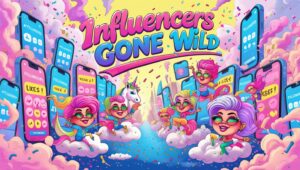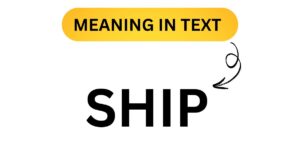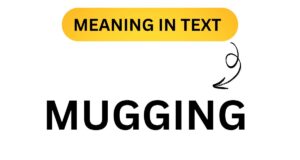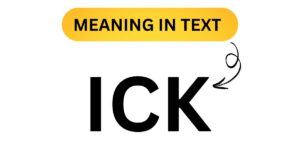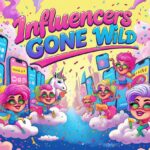In an era where social media has become the modern town square, influencers have emerged as the digital age’s celebrities, wielding significant power over consumer decisions, cultural trends, and even societal values.
But what happens when the pursuit of fame, engagement, and financial gain pushes these digital personalities to extremes? This comprehensive exploration delves into the phenomenon of “influencers gone wild” – examining how the delicate balance between authentic content creation and attention-seeking behavior affects followers, brands, and the influencers themselves.
The Rise of Influencers
Social media platforms have democratized fame, allowing ordinary individuals to cultivate extraordinary followings based on their content, personality, and ability to connect with audiences. What began with blogs and YouTube channels has evolved into a complex ecosystem spanning multiple platforms, with Instagram, TikTok, YouTube, and Twitch leading the charge.
The influencer industry has experienced exponential growth:
| Year | Estimated Market Value |
| 2016 | $1.7 billion |
| 2020 | $9.7 billion |
| 2022 | $16.4 billion |
| 2024 | $21.1 billion |
This rapid expansion reflects not just the increasing number of influencers, but also the growing willingness of brands to allocate substantial portions of their marketing budgets to influencer partnerships.
The appeal of becoming an influencer is multifaceted:
- Direct connection with audiences: Unlike traditional celebrities, influencers often maintain conversational relationships with their followers
- Creative freedom: The ability to create content on one’s own terms
- Work flexibility: No traditional 9-to-5 schedule constraints
- Potential for significant income: Top-tier influencers can earn six or seven figures annually
But perhaps most importantly, influencers have emerged as trusted voices in an advertising landscape where traditional marketing often falls flat. Studies show that 61% of consumers trust influencer recommendations, compared to just 38% who trust branded social media content.
How Influencers Make Money
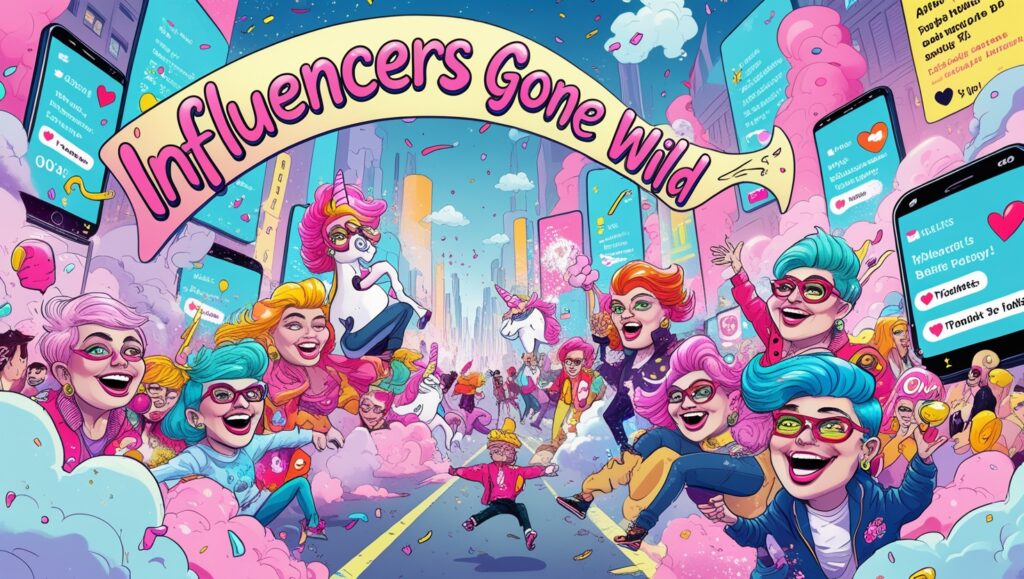
The influencer economy has evolved far beyond simple sponsored posts. Today’s content creators employ diverse monetization strategies:
Direct Brand Partnerships: The most visible income stream involves collaboration with brands to promote products or services. These partnerships can take various forms:
- Sponsored content: One-off posts featuring products/services
- Brand ambassadorships: Long-term relationships with consistent promotion
- Affiliate marketing: Commission-based earning through trackable links
- Product collaborations: Co-creating products with established brands
Platform-Specific Monetization:
- YouTube: Ad revenue, channel memberships, Super Chats during livestreams
- Instagram/TikTok: Creator funds, in-app shopping features, tipping systems
- Twitch: Subscriptions, bits (tipping), ads
- OnlyFans/Patreon: Subscription-based exclusive content
Business Extensions:
- Merchandise lines: Clothing, accessories, lifestyle products
- Digital products: E-books, courses, presets
- Service offerings: Coaching, consulting, speaking engagements
- Own product lines: Beauty products, nutrition supplements, technology
The income potential varies dramatically across niches and audience sizes:
“Micro-influencers with 10,000 to 50,000 followers can earn anywhere from $40,000 to $100,000 annually, while macro-influencers with millions of followers routinely command six to seven figures. The highest-earning influencers now make upwards of $20 million per year across multiple revenue streams.” – Influencer Marketing Hub Report, 2024
This financial incentive has transformed what began as authentic self-expression into a highly competitive industry where engagement metrics directly impact earning potential.
The Allure of the Spotlight
The psychological rewards of influencer status extend far beyond monetary compensation. The constant validation, attention, and sense of importance that comes with a large following creates powerful incentives that can be difficult to resist.
Psychological Factors:
- Validation and social proof: The dopamine rush from likes, comments, and follower growth
- Identity and purpose: For many, being an influencer becomes central to their self-concept
- Community and belonging: Leading a community provides meaningful connection
- Status and recognition: Being recognized in public or treated as a celebrity
- Creative fulfillment: A platform for self-expression and creativity
These psychological rewards create a reinforcement cycle where positive engagement encourages more content creation, often leading creators to push boundaries to maintain or grow their audiences.
Dr. Sarah Miller, a social media psychologist, explains:
“Many influencers experience what we call ‘engagement addiction’ – a psychological dependence on the validation that comes from social media metrics. This becomes particularly problematic when engagement plateaus or declines, potentially triggering increasingly extreme content choices to recapture audience attention.”
Research shows that 78% of full-time content creators worry about algorithm changes affecting their visibility, while 64% report feeling pressure to constantly create more engaging content. This pressure cooker environment sets the stage for the phenomenon of “influencers gone wild.”
The Dark Side of Fame: Influencers Gone Wild
The term “influencers gone wild” refers to content creators who cross ethical, safety, or legal boundaries in pursuit of engagement, often resulting in controversy, backlash, or even career-ending consequences. This behavior typically manifests in several recognizable patterns:
Engagement-Driven Extremes:
- Dangerous stunts: Particularly common on platforms that reward short-form, high-impact content
- Extreme pranks: Often involving unwitting participants or public disruptions
- Shock value content: Deliberately provocative or boundary-pushing material
- Manufactured drama: Creating or amplifying conflicts for views
- Oversharing personal information: Using intimate details for content
Ethical Compromises:
- Misleading sponsorships: Promoting products without proper disclosure
- Manipulated imagery: Presenting unrealistic body images or lifestyles
- Cultural insensitivity: Using controversial cultural elements for engagement
- Exploitation of vulnerable populations: Using disadvantaged groups as content props
- Abandoning advertiser guidelines: Deliberately creating content that violates platform policies
The psychological factors driving this behavior include:
- Fear of irrelevance in a rapidly changing digital landscape
- Financial pressure when income depends on consistent engagement
- Identity threat when follower count stagnates or declines
- Competitive dynamics with other creators in similar niches
- Adaptation to algorithms that often reward controversial content
The consequences of such behaviors extend beyond the influencers themselves, affecting followers, brands, and even broader society.
Notable Examples of Influencers Gone Wild
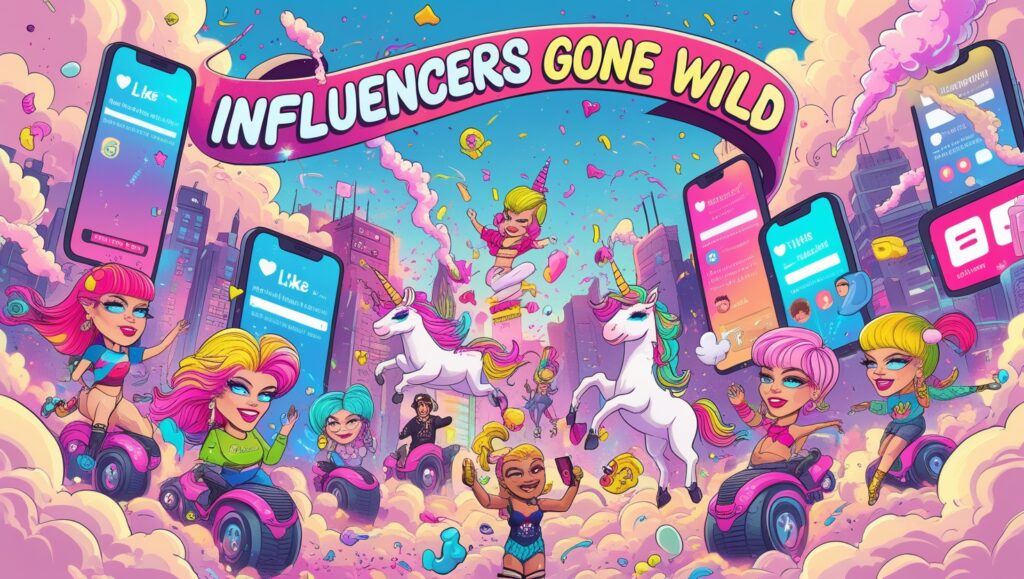
The history of social media is littered with cautionary tales of influencers whose pursuit of engagement led to significant backlash:
Logan Paul’s Suicide Forest Controversy: In 2017, the YouTube star filmed and published content featuring a suicide victim in Japan’s Aokigahara Forest. The video, viewed millions of times before removal, sparked international outrage, led to the temporary demonetization of his channel, and caused significant reputational damage.
Influencer Travel During COVID Lockdowns: During the height of pandemic restrictions, numerous influencers traveled to destinations like Dubai and the Maldives, documenting their lockdown-free lifestyles while their followers remained under strict restrictions. This led to widespread criticism and the term “pandemic influencer.”
Social Experiment Gone Wrong: In 2019, an influencer with over 5 million followers staged a “social experiment” where they pretended to kidnap a child in public to create content about child safety. The poorly conceived stunt resulted in police involvement and significant legal consequences.
Faking Illnesses for Engagement: Multiple influencers have been exposed for fabricating or exaggerating health conditions to generate sympathy and engagement, including cases of faked cancer diagnoses that led to monetary donations from concerned followers.
Dangerous Product Promotions: Several beauty and wellness influencers have faced backlash for promoting unsafe product uses, including improper use of cosmetic procedures, unregulated supplements, or dangerous diet protocols.
The pattern in these examples reveals a common trajectory:
- Initial success based on authentic content or personality
- Growing pressure to maintain or increase engagement
- Gradual boundary-pushing to capture attention
- A tipping point where ethical or legal lines are crossed
- Public backlash and consequences
- Attempted redemption arcs or platform shifts
This pattern highlights how the incentive structures of social media can gradually normalize increasingly extreme behavior.
The Blurred Line Between Authenticity and Attention-Seeking
At the heart of the “influencers gone wild” phenomenon is the increasingly blurry distinction between authentic self-expression and manufactured content designed primarily for engagement.
The Authenticity Paradox:
The influencer industry was built on the premise of authenticity – real people sharing real experiences as an alternative to polished traditional media. However, as the space has professionalized, this authenticity has become increasingly performative.
Research from the University of Pennsylvania found that 73% of followers believe authenticity is the most important quality in influencers they follow, yet 68% of influencers admit to carefully crafting their “authentic” personas.
This creates what researchers call the “authenticity paradox” – the more influencers try to appear authentic, the more constructed their online presence becomes.
The Spectrum of Content Creation:
| Authentic Content | Gray Area | Attention-Seeking Content |
| Genuine interests and passions | Selecting only the most engaging authentic moments | Manufactured moments created solely for content |
| Honest product reviews based on experience | Reviews influenced by brand relationships | Promoting products regardless of quality |
| Sharing real life challenges | Amplifying challenges for narrative purposes | Creating fictional problems for sympathy |
| Natural aesthetic and presentation | Enhanced but realistic presentation | Heavily edited or misrepresentative content |
The challenge for both creators and followers is that this spectrum exists on a continuum, with the lines constantly shifting based on platform incentives, audience expectations, and financial pressures.
Authenticity vs. Attention-Seeking: The Impact on Followers
The consequences of influencer behavior extend far beyond the creators themselves, significantly impacting their followers’ wellbeing, perceptions, and behaviors.
Positive Impacts of Authentic Content:
- Community building: Creating spaces where people with shared interests connect
- Educational value: Teaching skills, sharing knowledge, and broadening perspectives
- Representation: Showcasing diverse voices and experiences
- Support networks: Helping followers navigate similar challenges
- Genuine product discovery: Introducing followers to products that genuinely improve their lives
Negative Impacts of Attention-Seeking Content:
- Unrealistic expectations: Creating impossible standards for appearance, lifestyle, or success
- Social comparison: Triggering harmful comparison that damages self-esteem
- Misinformation: Spreading inaccurate information about health, finance, or other important topics
- Encouraging risky behavior: Normalizing dangerous activities for engagement
- Consumer manipulation: Pushing products regardless of quality or necessity
Research from the Royal Society for Public Health found that 71% of young adults report having taken specific actions based on influencer recommendations, and 62% have felt inadequate about their own lives after viewing influencer content.
Negative Impacts on Followers
When influencers prioritize engagement over responsibility, the consequences for their followers can be particularly harmful:
Psychological Impacts:
- Increased anxiety and depression: Studies show a correlation between exposure to extreme influencer content and deteriorating mental health metrics
- Body image issues: Particularly prevalent in fashion, fitness, and beauty niches where edited images create unrealistic standards
- FOMO (Fear of Missing Out): Creating persistent anxiety about not having equivalent experiences or possessions
- Reduced self-efficacy: Diminishing followers’ belief in their ability to achieve goals
- Normalization of risky behaviors: Making dangerous activities seem commonplace and acceptable
Behavioral Impacts:
- Financial strain: Followers making unaffordable purchases to emulate influencer lifestyles
- Engagement in risky activities: Attempting dangerous stunts or challenges popularized by influencers
- Parasocial relationship development: Forming unhealthy one-sided emotional attachments to influencers
- Reduced critical thinking: Accepting influencer statements without verification
- Distorted value systems: Prioritizing appearance, material goods, or engagement over substantive life goals
Demographic Considerations:
Young followers are particularly vulnerable to these effects. A 2023 study published in the Journal of Adolescent Health found that 14-17 year-olds who regularly engaged with content from influencers who exhibited “gone wild” behaviors showed:
- 41% higher rates of risky behavior participation
- 37% more frequent reports of feeling inadequate about their lives
- 28% greater likelihood of making purchases beyond their means
These findings underscore the responsibility that comes with influence – a responsibility that is increasingly being recognized by both platforms and regulatory bodies.
The Responsibility of Brands
Brands play a pivotal role in the influencer ecosystem, often providing the financial incentive that drives content creation decisions. This position comes with significant responsibility regarding the types of creator behavior they reward or penalize.
Current Brand Approaches:
- Reactionary distancing: Quickly severing ties with controversial influencers after incidents
- Preventative vetting: Implementing thorough background checks before partnerships
- Behavioral clauses: Including morality clauses in contracts that address potential misconduct
- Monitoring systems: Employing social listening tools to catch problematic content early
- Values alignment: Selecting influencers whose authentic values match the brand
Emerging Best Practices:
- Incentivizing responsible content: Creating compensation structures that reward quality over pure engagement
- Long-term partnerships: Building deeper relationships with fewer influencers rather than one-off collaborations
- Co-creating ethical guidelines: Working with influencers to establish shared standards
- Transparency commitments: Requiring clear disclosure practices beyond legal minimums
- Impact measurement: Evaluating partnerships based on brand health metrics, not just conversion
Key Considerations for Brands
Brands navigating the complex influencer landscape should consider these essential factors when developing their influencer marketing strategies:
Risk Assessment Framework:
- Platform-specific risks: Understanding the unique culture and potential pitfalls of each platform
- Audience vulnerability: Considering the demographic makeup of both the brand and influencer’s audience
- Content category sensitivities: Recognizing that certain niches (health, finance, parenting) carry greater responsibility
- Influence scale: Acknowledging that larger platforms require more rigorous oversight
- Prior controversy patterns: Looking beyond single incidents to identify behavioral patterns
Brand Protection Strategies:
- Phased partnership approach: Starting with smaller collaborations before major investments
- Regular content reviews: Establishing periodic audits of influencer content across platforms
- Crisis response protocols: Developing clear procedures for addressing potential controversies
- Educational resources: Providing partners with training on ethical content creation
- Exit strategies: Creating clear, fair processes for ending problematic partnerships
Ethical Considerations:
- Power dynamics: Acknowledging the leverage that brands often hold over creators
- Financial pressure awareness: Understanding how payment structures may incentivize problematic content
- Supporting creator wellbeing: Recognizing that sustainable partnerships require healthy creators
- Audience protection: Prioritizing the welfare of followers exposed to branded content
- Industry standard elevation: Contributing to higher ethical standards across the industry
“Brands that treat influencer relationships as purely transactional inevitably face greater risk. The most successful partnerships are built on shared values and mutual respect for audience welfare.” – Emily Rodriguez, Chief Ethics Officer, Influencer Marketing Association
The Consequences of Going Wild
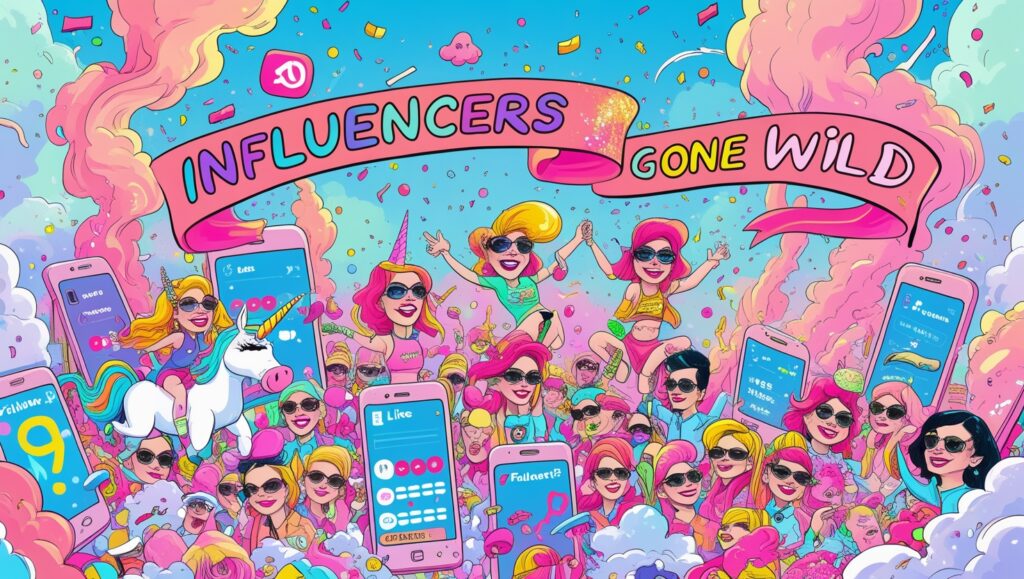
Influencers who cross ethical or legal boundaries for engagement face increasingly significant repercussions in today’s more mature digital landscape:
Platform Consequences:
- Demonetization: Loss of platform-based income streams
- Algorithm penalties: Reduced visibility and reach
- Account restrictions: Limited functionality or temporary suspensions
- Permanent bans: Complete removal from platforms
- Cross-platform effects: Reputation damage affecting presence across multiple platforms
Financial Impact:
- Brand partnership terminations: Immediate contract cancellations
- Future opportunity costs: Long-term difficulty securing new partnerships
- Legal expenses: Costs associated with potential lawsuits or settlements
- Revenue model disruption: Need to rebuild monetization strategies
- Team impacts: Potential layoffs of support staff (managers, editors, etc.)
Legal Ramifications:
- Civil litigation: Lawsuits from affected individuals or brands
- Regulatory penalties: FTC or equivalent body fines for disclosure violations
- Criminal charges: In cases involving serious behavior (endangerment, fraud, etc.)
- Intellectual property issues: Copyright strikes or legal action for content theft
- International considerations: Navigating varying legal standards across jurisdictions
Common Consequences
The aftermath of influencer controversies follows recognizable patterns across platforms and content categories:
Short-term consequences typically include:
- Initial audience surge: Controversies often drive temporary traffic increases
- Engagement polarization: Intensified interaction from both supporters and critics
- Media attention: Coverage across traditional and social media channels
- Platform response: Official actions from hosting platforms
- Brand statement phase: Public responses from associated companies
Long-term consequences often involve:
- Audience composition shift: Core demographic changes as some followers leave while controversy-seekers arrive
- Content expectation recalibration: Pressure to maintain or exceed previous boundary-pushing
- Professional reputation damage: Lasting effects on career opportunities outside social media
- Mental health impacts: Psychological consequences of public scrutiny and backlash
- Identity transformation: Often necessitating significant personal or brand reinvention
Research from social media analytics firm Tubular found that influencers experiencing major controversies see an average 23% reduction in brand deal value over the subsequent 12 months, even after audience recovery.
The Future of Influencers
The influencer industry continues to evolve rapidly, with several key trends likely to shape its future direction:
Regulatory Development:
- Standardized disclosure requirements: More consistent global standards for sponsored content
- Platform responsibility expansion: Increased pressure on platforms to monitor creator behavior
- Age-restricted content enforcement: Stricter controls on content accessible to minors
- Financial regulation: Greater oversight of influencer-based financial advice
- Cross-border coordination: International cooperation on influencer marketing standards
Industry Self-Regulation:
- Creator guilds and associations: Professional organizations establishing ethical standards
- Certification programs: Formal training and credentials for professional influencers
- Ethical agency models: Management companies differentiating through responsible practices
- Peer accountability systems: Creator-led initiatives to maintain industry standards
- Transparent metrics: Moving beyond vanity metrics to more meaningful engagement measures
Platform Evolution:
- Algorithm refinement: Reduced rewards for controversial or boundary-pushing content
- Safety-focused features: New tools to protect both creators and audiences
- Creator wellbeing initiatives: Programs addressing the mental health challenges of content creation
- Audience protection tools: Features allowing followers to curate healthier feeds
- Educational components: Platform-provided resources on media literacy
Emerging Creator Models:
- Micro-community focus: Emphasis on deeper engagement with smaller, more dedicated audiences
- Value-aligned creation: Content explicitly built around shared principles with followers
- Subscription sustainability: Less dependence on viral moments for financial stability
- Collaborative approaches: Multiple creators sharing platforms and responsibility
- Cross-platform diversification: Reducing vulnerability to single platform algorithm changes
Conclusion
The phenomenon of “influencers gone wild” represents the inevitable growing pains of a rapidly evolving media landscape where traditional gatekeepers have been removed. The tension between authentic connection and attention-seeking behavior will likely remain a defining characteristic of social media culture for years to come.
For influencers, the path forward requires intentional choices about how they define success beyond pure engagement metrics. For brands, more sophisticated partnership strategies that prioritize alignment and responsibility over reach. For platforms, algorithm and policy evolution that rewards quality over controversy. And for followers, developing greater media literacy to navigate an increasingly complex content environment.
The most hopeful vision for the future of influencer culture is one where the pendulum swings back toward the original promise of social media – authentic connection, democratized communication, and content that enriches rather than exploits. This future depends on all stakeholders recognizing their role in creating a healthier digital ecosystem.
As researcher and digital ethics expert Dr. Michael Zhang notes:
“The influencer economy is essentially a massive, ongoing experiment in attention dynamics. The initial phase rewarded increasingly extreme behavior as platforms and audiences adapted to unprecedented content volume. We’re now entering a correction phase where both creators and consumers are seeking more sustainable, meaningful engagement models.”
This correction, while sometimes uncomfortable, represents a necessary maturation for an industry that has grown too quickly to develop appropriate ethical guardrails. The future of influence will belong to those who understand that lasting impact comes not from momentary viral fame, but from consistent value creation and genuine connection.
FAQs
Q: How can I identify potentially problematic influencer behavior as a follower?
A: Look for these warning signs:
- Content that seems increasingly extreme or boundary-pushing
- Inconsistent disclosure of sponsored content
- Promotion of products or services that change frequently
- Engagement baiting through controversial statements
- Content that makes you feel consistently inadequate or anxious
Q: What responsibility do platforms have in preventing “influencers gone wild” situations?
A: Platforms have significant responsibility through:
- Algorithm design that doesn’t reward controversial content
- Clear, enforced community guidelines
- Age-appropriate content filters
- Transparent monetization policies
- Creator education and resources
Q: How can parents help their children navigate influencer content safely?
A: Effective strategies include:
- Co-viewing content with younger children
- Discussing the business model behind influencer content
- Teaching critical media literacy skills
- Using platform safety tools and time limits
- Creating open dialogue about content that makes them feel inadequate
Q: Are there positive examples of influencers using their platforms responsibly?
A: Absolutely. Many influencers prioritize:
- Transparent disclosure practices
- Evidence-based information
- Realistic portrayals of their lives
- Consistent values across content
- Genuine engagement with their communities
- Using their platforms for social good
